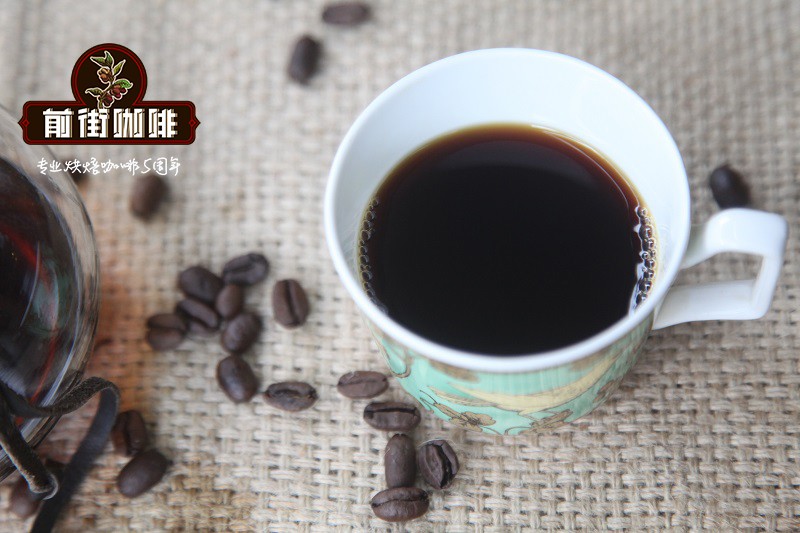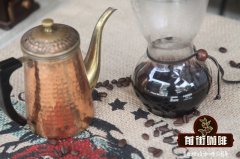Sun Bean EU+NOP introduction Cup Test score and overall Review of Saquarema Farm in South Minas, Brazil

Professional coffee knowledge exchange more coffee bean information please follow the coffee workshop (Wechat official account cafe_style)
EU+NOP of sun-dried beans from Saquarema Farm in South Minas, Brazil
Coffee was first introduced to Brazil in the early 18th century. In 1727, the Brazilian government sent a personable army officer to secretly bring coffee seeds from French Gaiana to Brazil on the pretext of mediating border disputes. It is said that the governor's wife of French Gayana was so fascinated by the officer that she secretly brought coffee tree seeds to him at a farewell dinner party. At present, 2 million hectares of land in Brazil is used to grow coffee, the largest is Arabica, and the beans will eventually be sent to large bakers in various countries, also known as Santos (in the name of the export port of Santos, not the producing area). Brazil has also proved to be able to produce gourmet coffee and small quantities of coffee, and the local boutique coffee can not only be provided by small-scale coffee farmers. The main coffee producing areas in Brazil are Sul de Minas South Minas, Matas de Minas Minas South East Mountain Forest, Cerrado Hirado, the north-central mausoleum of Chapadas de Minas Minas, Mogiana, Paran á Parana and Bahia Bachia. There are both traditional varieties and variants, such as Bourbon, Mondo Novo Mondonovo, Icat ú Ikatu, Kaduai, Iapar, cultivated card Taiyi.
Brazil is the world's largest coffee producer and accounts for about 32, 000 of coffee production. Due to the inducement of coffee competition, the quality of coffee beans produced in the high-altitude areas of the south has been appreciated, mainly by the farms around the Minas platform, and the coffee quality is also the largest among Brazilian beans, such as Syracuse in the west of Minas and Matas in the east, Bashiya in the north or small farms in the south. Minas has almost become synonymous with Brazilian boutique coffee. In recent years, the coffee competition is so accurate that it is separated by treatment (water treatment, half water washing, half sun drying), which has developed a variety of flavors and taste, which is completely different from that of traditional Brazilian coffee. In particular, half-sun and solarization performed best, with an increase in the aroma of clean, low-acidity fruit, reducing the rich chocolate flavor in the city of Kasuela, South Minas Gerais. Saquarema this is an ancient farm with a history of more than 200 years. The farm picks coffee without machine, but fully ripe coffee beans are picked by hand. The dry aroma has citrus and fruit tea aromas, the wet aroma has black tea aromas, the taste shows elegant aromas of jasmine and herbal tea, and the finish has a mellow oolong tea flavor. It tastes very fresh and gentle, which is an amazing work rarely seen in Brazilian beans.
Property Characteristics: farm characteristics
Farmer Farm owner: Fazenda Saquarema
City City: Minas Gerais State Minas Gias
Country countries: Brazil
Altitude altitude: 1250 m
Farm Size farm area: 110000 coffee workers
Coffee Characteristics: coffee characteristics
Variety varieties: Catua í, Catuca í, Yellow Bourbon Kaduai Yellow bourbon
Processing System treatment: Pulped Natural solarization
Appearance appearance: 16-18 Screen (16 Murray 18 eyes)
Top Jury Descriptions comment: the baking degree (Cinnamon) measured by the cup at the beginning of 60 seconds of explosion.
Aroma aroma / flavor flavor: peanut, malt, mint, black tea, vervain, sugar cane, caramel, chocolate, cocoa, oil ester
Sour quality: citrus, blueberry, oxalic acid, red apple
The complexity of complex is similar to that of other: clear and clean aroma of black tea, gentle taste, high temperature aroma of oolong tea, and rare elegance of Yu Yun Baxi beans.
Overall style attribute: clear aroma of tea. Rarely clean. Amazing.
Cup test score and overall review of direct coffee
Cup test date: 2014.03.29
Dry aroma: 9
Wet aroma: 8
Clean: 9
Sweetness: 9
Acid quality: 8
Palate: 9
Flavor: 8
Yu Yun: 8
Balance: 9
Overall: 9
Cup test score: 860%, but because Brazil is located in tropical rain forest areas, the terrain is relatively flat and there are few high-altitude mountain forests, most coffee is grown in low-altitude non-volcanic soil areas, and there is not much shade for shading. as a result, Brazil beans grow quickly, but the density and soft flavor of coffee does not change much. Coupled with large-scale machine harvesting of coffee beans with a wide range of maturity differences in coffee harvesting at the same time, so that the quality of Brazilian beans is not particularly outstanding has always stayed in the category of commercial beans.
Important Notice :
前街咖啡 FrontStreet Coffee has moved to new addredd:
FrontStreet Coffee Address: 315,Donghua East Road,GuangZhou
Tel:020 38364473
- Prev

Introduction of sun-dried beans in Minas-Aurea Manor, Brazil what are the shallow baking and deep baking
Professional coffee knowledge exchange more coffee bean information please follow the words of the roaster in the coffee workshop (Wechat official account cafe_style), how to bake Sakuran? How to adjust the baking curve? Recently, we like a bean very much. How did Sakuran get its name? In 2017, Ethiopia's DW raw bean company delivered their coffee beans.
- Next

Brazilian Minas coffee and more Brazilian boutique coffee are expected to smell good in China.
Professional coffee knowledge exchange more coffee bean information please follow the words of the roaster in the coffee workshop (Wechat official account cafe_style), how to bake Sakuran? How to adjust the baking curve? Recently, we like a bean very much. How did Sakuran get its name? In 2017, Ethiopia's DW raw bean company delivered their coffee beans.
Related
- Beginners will see the "Coffee pull flower" guide!
- What is the difference between ice blog purified milk and ordinary milk coffee?
- Why is the Philippines the largest producer of crops in Liberia?
- For coffee extraction, should the fine powder be retained?
- How does extracted espresso fill pressed powder? How much strength does it take to press the powder?
- How to make jasmine cold extract coffee? Is the jasmine + latte good?
- Will this little toy really make the coffee taste better? How does Lily Drip affect coffee extraction?
- Will the action of slapping the filter cup also affect coffee extraction?
- What's the difference between powder-to-water ratio and powder-to-liquid ratio?
- What is the Ethiopian local species? What does it have to do with Heirloom native species?

